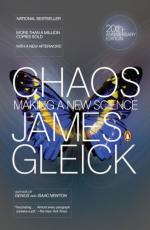
|
Chapters 1-2
• In Chapter 1, "The Butterfly Effect," Gleick begins by discussing the weather simulator created by Edward Lorenz.
• The weather changed slowly but surely, yet it never rained, seasons never changed, and nightfall never arrived. I
• The year was 1960 and Lorenz, a research meteorologist, was a fixture at the Massachusetts Institute of Technology.
• Gleick explains Lorenz's processes, numerical methods, and applications that would make him the weather god in his own artificial universe.
• In the 1960s, not only did meteorologists dislike forecasting, they also mistrusted computers, which seemed like large calculators that were not competent to do necessary computations.
• In the 1950s and 1960s two technologies were maturing together: the space satellite and the digital computer were making new things possible.
• In the 1980s, the National Meteorological Center was born in Maryland which was the second best forecasting site in the world.
• The European Center for Medium Range...
|
This section contains 1,894 words (approx. 7 pages at 300 words per page) |

|




